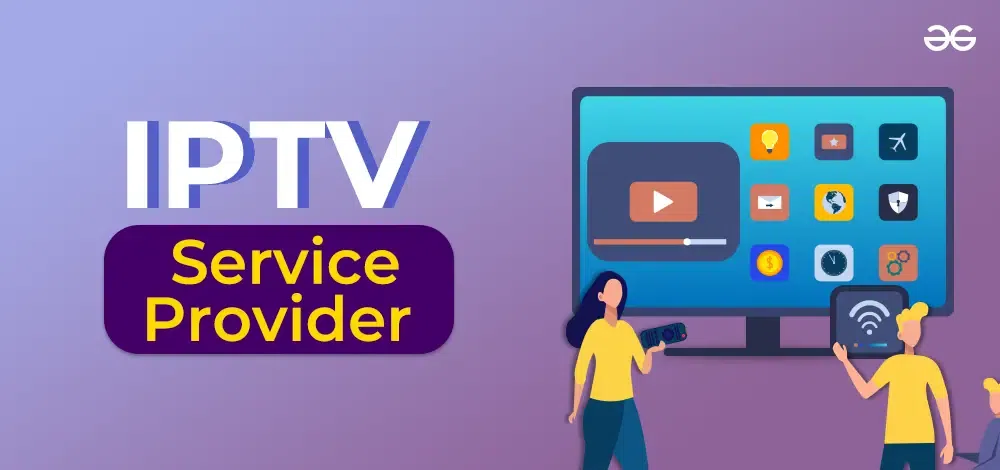Enhance Your Viewing Experience: IPTV Subscription with Substantial Networks
Enhance Your Viewing Experience: IPTV Subscription with Substantial Networks
Blog Article
How IPTV Functions: A Step-by-Step Overview to Web Method Television Technology
Net Method Television (IPTV) has reinvented the means we eat tv web content, providing a new realm of opportunities with the power of the net. From the basic concepts of IPTV to the intricate procedure of web content delivery, each step plays an important function in making sure a seamless viewing experience.
IPTV Fundamentals
In comprehending IPTV fundamentals, it is essential to comprehend the fundamental functions of this innovation in providing television content online. IPTV, which stands for Net Method Tv, makes use of Net Procedure (IP) networks to transfer tv web content to customers' tools. Unlike typical approaches of transmitting tv content via wire or satellite signals, IPTV streams media with high-speed net links.

In addition, IPTV permits interactive abilities, such as video clip as needed (VOD) and electronic program guides (EPG), enhancing the individual experience by providing more control and flexibility in accessing content. On the whole, comprehending the essentials of IPTV sets the foundation for exploring its advanced capabilities and the advantages it offers to modern tv usage.
Content Shipment Process
Reliable content shipment in IPTV systems involves a well-structured procedure that guarantees smooth transmission of television web content over IP networks. The material shipment process in IPTV starts with the creation of the video web content, which is then encoded right into digital layout suitable for IP transmission. This inscribed content is then safely saved on servers called media servers. When a customer requests particular material, the IPTV system obtains the asked for data from the media servers and supplies it to the viewer's device over the net.

Middleware Functionality
With the combination of middleware, IPTV systems gain improved performance that improves user communication and web content administration. Middleware offers as browse around here an important element that bridges the gap between the interface and the back-end infrastructure, facilitating smooth interaction and interaction within the IPTV system. One of the vital functions of middleware in IPTV is to allow individualized individual experiences by providing attributes such as interactive program guides, video-on-demand services, interactive marketing, and user choices administration. By centralizing these you can try this out capabilities with middleware, provider can offer a more vibrant and tailored IPTV experience to their clients.

Device Compatibility
Given the pivotal role of middleware in enabling seamless interaction and web content management in IPTV systems, an important element to think about is the compatibility of gadgets used for accessing the IPTV services. Device compatibility is crucial for ensuring a smooth customer experience and optimum efficiency when accessing IPTV material.
In the context of IPTV, device compatibility refers to the capability of a gadget to successfully connect with the IPTV service, show content correctly, and support the essential methods and codecs for streaming video clip material over the net. Different gadgets, such as smart TVs, set-top boxes, smart devices, tablet computers, and computers, may have differing levels of compatibility with IPTV solutions.
To ensure a seamless watching experience, it is very important for customers to select devices that are suitable with the details IPTV solution they are utilizing. Additionally, IPTV provider ought to supply support for a wide array of gadgets to accommodate the diverse needs of their individual base. By focusing on gadget compatibility, both users and provider can boost the overall IPTV experience.
Top Quality of Solution (QoS)
Taking into consideration the important role of preserving a high requirement of efficiency and integrity in IPTV systems, ensuring consistent High quality of Solution (QoS) continues to be a fundamental aspect of the individual experience. QoS in IPTV refers to the capability of the system to provide web content with very little disturbances, high resolution, and quickly loading times.
Company employ QoS systems such as website traffic prioritization, buffering, and mistake Recommended Reading improvement to keep a steady IPTV service. By prioritizing IPTV traffic over less time-sensitive information, providers can make certain smooth playback also throughout peak use hours. Buffering helps make up for network changes, while error correction strategies enhance information integrity.
Constant surveillance and optimization of QoS parameters are crucial to adjust to altering network conditions and user needs. Ultimately, a durable QoS structure is essential for providing a seamless and enjoyable IPTV experience to customers.
Conclusion
In conclusion, IPTV runs with the transmission of television web content over web method networks. The modern technology involves an organized procedure of material distribution, assisted in by middleware functionality to make certain compatibility across different gadgets. Top quality of Service plays an essential role in preserving the efficiency and reliability of IPTV solutions. Understanding the essential concepts of IPTV is necessary for understanding the ins and outs of this innovative tv modern technology.
Report this page